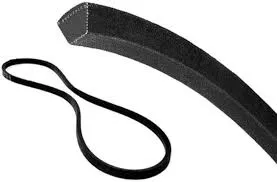- Arabic
- French
- Russian
- Spanish
- Portuguese
- Turkish
- Armenian
- English
- Albanian
- Amharic
- Azerbaijani
- Basque
- Belarusian
- Bengali
- Bosnian
- Bulgarian
- Catalan
- Cebuano
- Corsican
- Croatian
- Czech
- Danish
- Dutch
- Afrikaans
- Esperanto
- Estonian
- Finnish
- Frisian
- Galician
- Georgian
- German
- Greek
- Gujarati
- Haitian Creole
- hausa
- hawaiian
- Hebrew
- Hindi
- Miao
- Hungarian
- Icelandic
- igbo
- Indonesian
- irish
- Italian
- Japanese
- Javanese
- Kannada
- kazakh
- Khmer
- Rwandese
- Korean
- Kurdish
- Kyrgyz
- Lao
- Latin
- Latvian
- Lithuanian
- Luxembourgish
- Macedonian
- Malgashi
- Malay
- Malayalam
- Maltese
- Maori
- Marathi
- Mongolian
- Myanmar
- Nepali
- Norwegian
- Norwegian
- Occitan
- Pashto
- Persian
- Polish
- Punjabi
- Romanian
- Samoan
- Scottish Gaelic
- Serbian
- Sesotho
- Shona
- Sindhi
- Sinhala
- Slovak
- Slovenian
- Somali
- Sundanese
- Swahili
- Swedish
- Tagalog
- Tajik
- Tamil
- Tatar
- Telugu
- Thai
- Turkmen
- Ukrainian
- Urdu
- Uighur
- Uzbek
- Vietnamese
- Welsh
- Bantu
- Yiddish
- Yoruba
- Zulu
kol . 13, 2024 05:00 Back to list
Choosing the Right Size for Your Fan Belt for Optimal Performance and Longevity
Understanding Fan Belt Sizes A Comprehensive Guide
Fan belts, also known as serpentine belts, are crucial components in an engine's accessory drive system. They are responsible for powering various devices such as the alternator, water pump, power steering pump, and air conditioning compressor. Understanding fan belt sizes is essential for any vehicle owner or mechanic, as using the correct size ensures optimal performance and prevents potential engine damage.
What is a Fan Belt?
A fan belt is a reinforced rubber belt designed to transfer power from the engine crankshaft to various components. Unlike individual v-belts, which were common in older vehicles, modern cars typically use a single serpentine belt that wraps around multiple pulleys. This design not only simplifies the engine’s accessory drive system but also enhances efficiency and reduces the risk of belt slip.
Importance of Correct Fan Belt Size
Using the correct fan belt size is vital for several reasons
1. Performance A belt that is too loose can slip, leading to inefficient power transfer. This not only compromises the performance of accessories like the alternator and air conditioning but also increases wear on the belt itself. Conversely, a belt that is too tight can cause excessive stress on engine components, potentially leading to mechanical failures.
2. Fuel Efficiency An improperly sized fan belt can affect engine performance, which may result in decreased fuel efficiency. This is particularly noticeable in older vehicles or those with high mileage where the engines have to work harder to compensate for the loss of power.
3. Longevity Correctly sized belts tend to last longer. A well-fitted serpentine belt can withstand the stresses of daily driving, while an incorrectly sized belt may wear out prematurely, resulting in costly repairs and replacements.
How to Determine the Correct Size
fan belt size

Determining the appropriate fan belt size involves a few straightforward steps
1. Consult the Owner’s Manual The easiest way to find the correct size of the fan belt is to refer to the vehicle’s owner manual. This document typically contains specifications for various parts, including the fan belt.
2. Check the Existing Belt If the fan belt is being replaced, measuring the existing belt can provide a size reference. Use a measuring tape to measure the length, width, and any notches if present.
3. Use Online Tools Various online tools and databases allow users to input their vehicle's make, model, and year to find the appropriate fan belt size.
4. Visit an Automotive Store If in doubt, visiting an automotive retailer or mechanic can provide expert advice and ensure you choose the right size.
Signs of a Worn-out Fan Belt
To maintain optimal performance, it’s essential to regularly inspect the fan belt for signs of wear and tear. Common indicators include
- Cracking or fraying on the belt surface. - Signs of glazing, which looks like a shiny or smooth surface. - Squealing noises when starting the engine. - Visible signs of misalignment or slipping.
Conclusion
In conclusion, understanding fan belt sizes is crucial for maintaining the health of your vehicle's engine and its components. Whether you are replacing an old belt or performing routine maintenance, ensuring the correct size will help maximize performance, increase fuel efficiency, and extend the life of both the belt and the engine itself. Regular inspections and adherence to the manufacturer’s specifications can prevent unexpected breakdowns and keep your vehicle running smoothly for years to come.
-
Korean Auto Parts Timing Belt 24312-37500 For Hyundai/Kia
NewsMar.07,2025
-
7PK2300 90916-T2024 RIBBED BELT POLY V BELT PK BELT
NewsMar.07,2025
-
Chinese Auto Belt Factory 310-2M-22 For BMW/Mercedes-Benz
NewsMar.07,2025
-
Chinese Auto Belt Factory 310-2M-22 For BMW/Mercedes-Benz
NewsMar.07,2025
-
90916-02660 PK Belt 6PK1680 For Toyota
NewsMar.07,2025
-
drive belt serpentine belt
NewsMar.07,2025

